The Table
We are no longer building saddle trees, but we have two videos about how Western saddles fit horses available on our westernsaddlefit.com website.
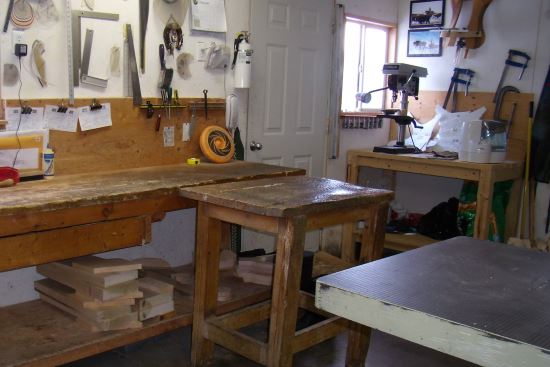
When we started the business over twenty years ago, Rod built his workbench and the table. He built them the same height as each other so they would match, and the height chosen was the height of the table on the band saw. This way he could use either table or bench to support the end of a long board that hung a long way out past the band saw when cutting.
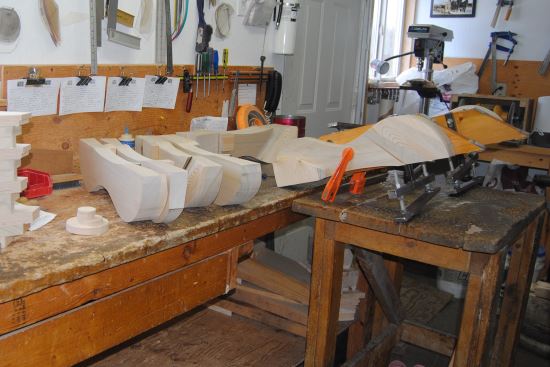
The table had many uses over the years. Originally it was the primary surface for varnishing trees until we built the varnishing bench after the addition. Often it was just extra room to hold trees or pieces of wood. It gave Rod the extra surface space he needed when cutting out a set of four trees. And so its home base was sitting by the bench close to the door.
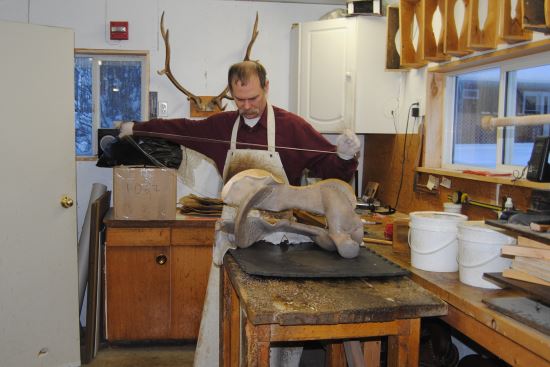
But… it got used for other things as well, and for that it needed to be moved. Inside, it was the rawhiding table.
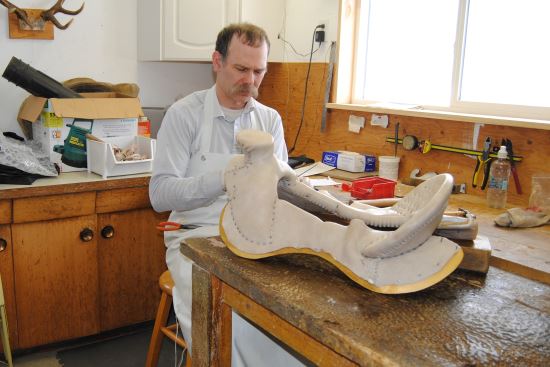
How many pictures of variations of this scene have I posted over the years? So on days Rod was rawhiding, it got dragged to the far end of the shop.
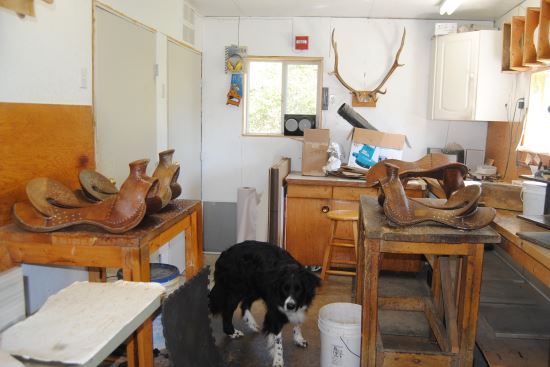
It was often an extra place to put trees that had been varnished.
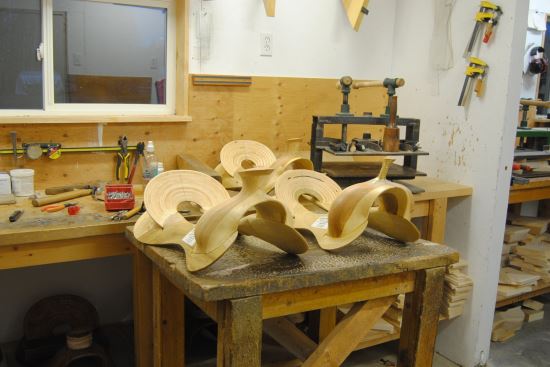
When you have four rawhided and four just built, they take up a lot of bench space.
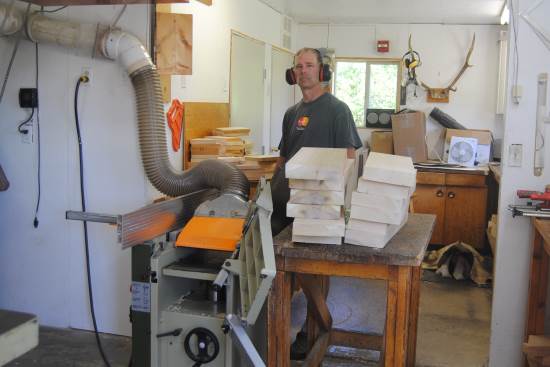
It was used when we were thicknessing as well. One of us would stand at each end of the jointer/planer with the table beside it to hold the wood we were working on.
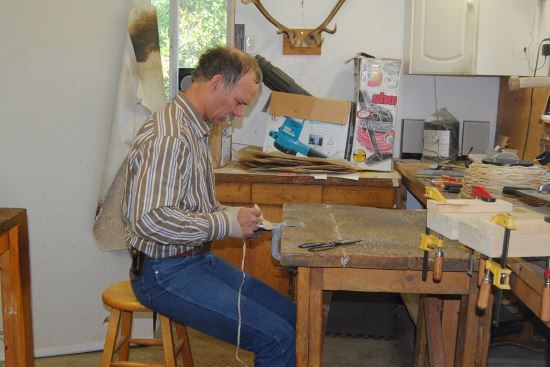
The ledge on the edge (it rhymes!!) was just right for attaching the string cutter and the table gave lots of room for the larger sections of deer hide, so it was used when we cut string. And being as the center of the shop was rather in the way, it would get dragged to the end again for this job.
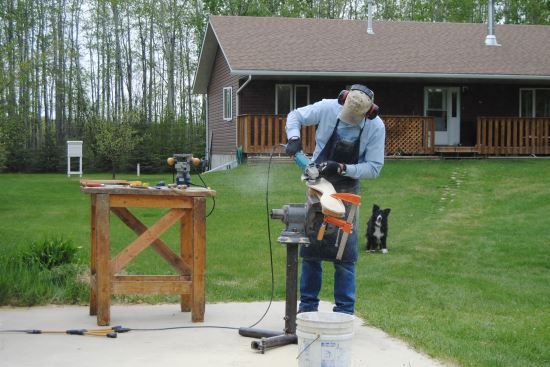
But it didn’t just get to be inside. Rod has said many times that he probably wouldn’t have been a tree maker if he couldn’t be outside as much as possible. In the winter, not possible. But in the summer – possible!!
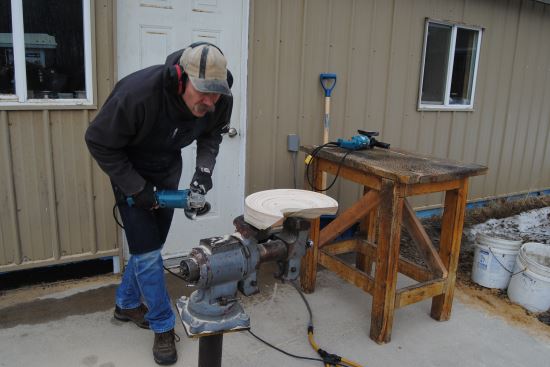
So the table got dragged outside as early in the spring as possible… (March 30th here)
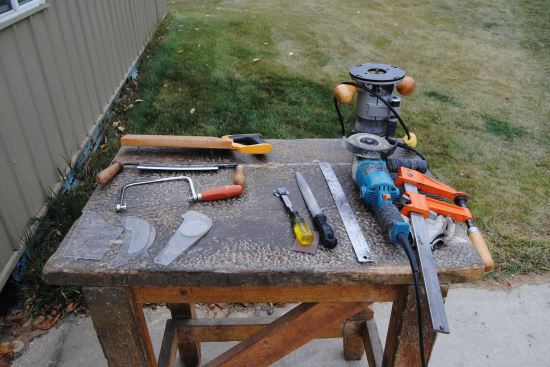
to as late in the fall as possible… (October 22nd 2014) But regardless of when it was used, the tools were always laid out oh, so neatly…
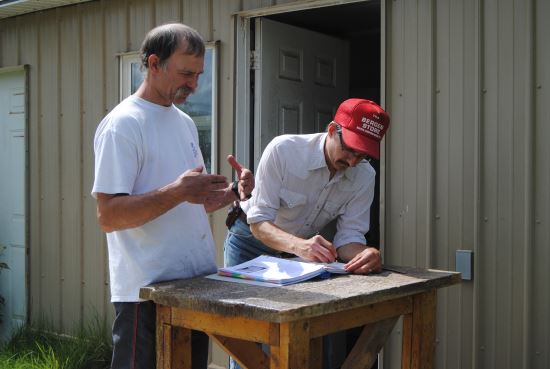
"The student" even used it as a desk…
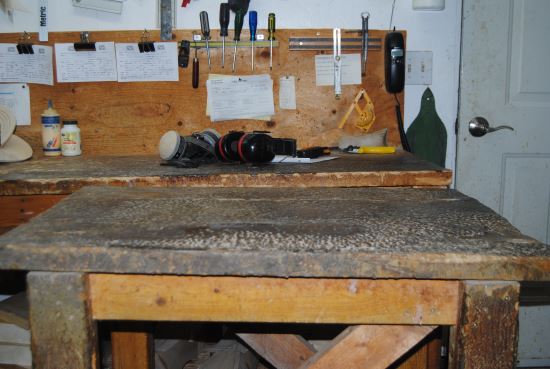
So – after twenty years of dragging it around on cement, which end do you think was the front?
